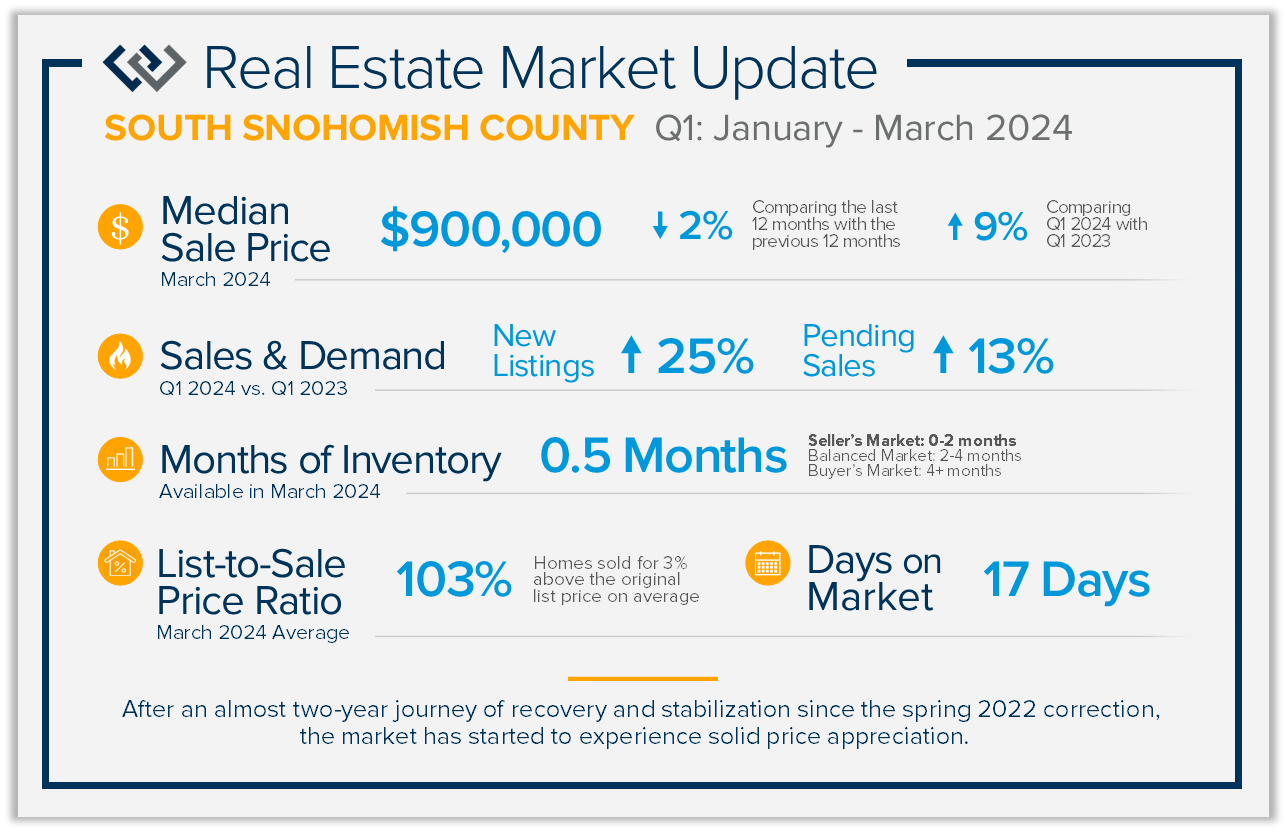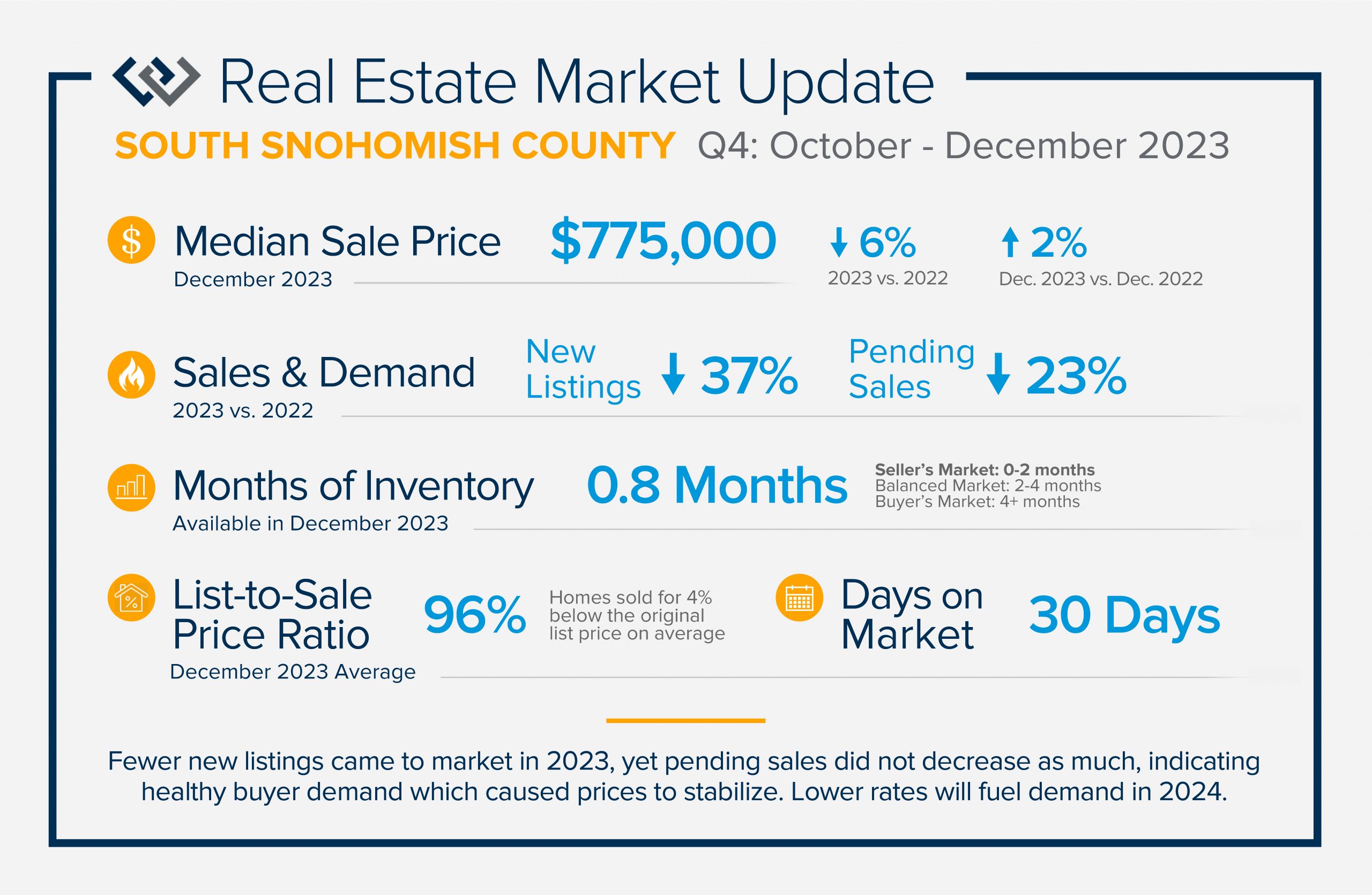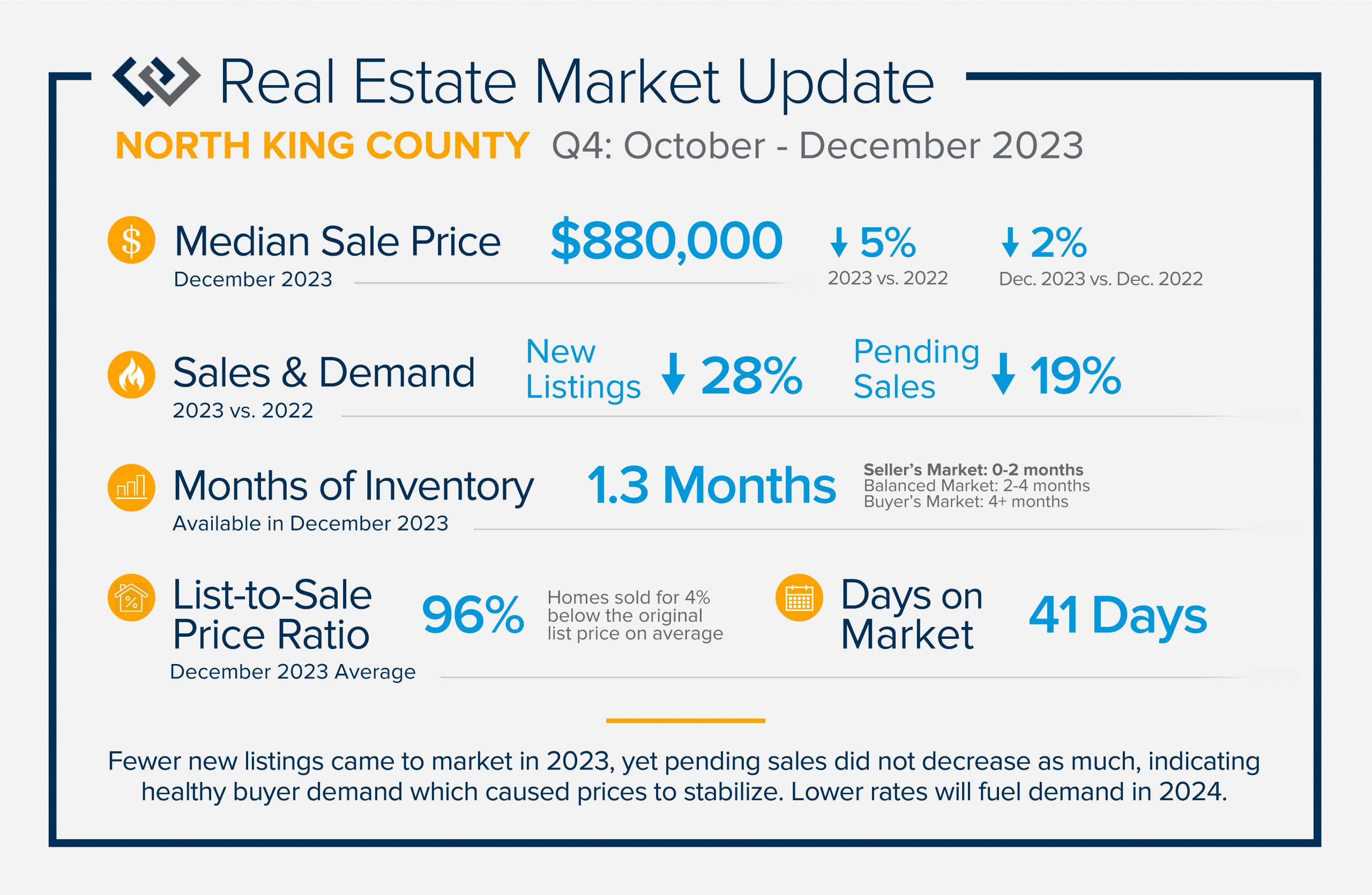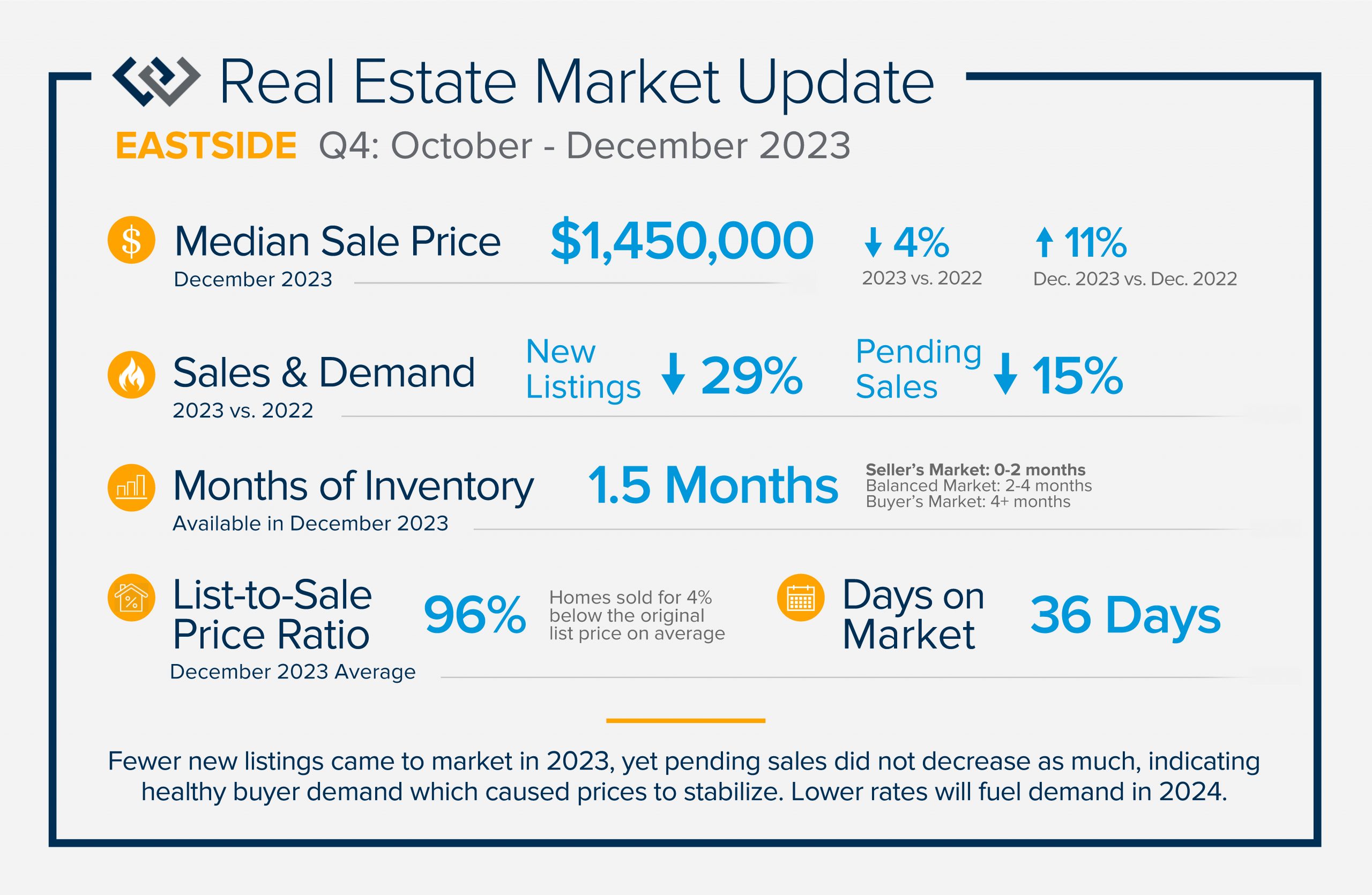As promised, here is the latest update regarding the $418 Million NAR Lawsuit Settlement and how it will affect real estate operations in WA State. As the deadline to opt in to the NAR Lawsuit Settlement approaches, the Northwest Multiple Listing Service (NWMLS) announced last week that they have voted to NOT opt-in to the settlement.
The NWMLS is a member-owned organization that serves over 35,000 brokers in WA State where 26 of the 39 counties in WA, including Snohomish, King, Skagit, Kitsap, Whatcom, and Pierce counties share their listings. Unlike many MLSs across the country, the NWMLS is not owned by the National Association of Realtors (NAR), giving them a choice to opt in to the lawsuit settlement which would require payment and adhering to specific business practices. With transparency a proven cornerstone of their mission, the NWMLS felt secure and confident in the structure and processes they have in place. Their intent has always been to elevate consumer protection and provide an open and fair marketplace, which led to the decision to not opt in to the settlement agreement.
Besides payment, there are 4 major mandates resulting from the settlement agreement that NAR-owned MLSs and non-NAR MLSs that opt in will be required to adapt to in August 2024.
- The requirement to provide Buyer Brokerage Compensation (BBC) in all listings will be removed.
- Brokers will be required to enter into a written Buyer Agency Agreement (BAA) with Buyers which clearly outlines compensation before rendering Buyer Brokerage Services.
- Listing Agreements will de-couple the listing brokerage compensation from the buyer brokerage compensation, outlining clear and separate offerings of compensation for each side of a transaction.
- MLSs will be prohibited from publishing offers of buyer brokerage compensation.
The majority of the requirements mandated by the settlement had already been established by the NWMLS. In 2019, the NWMLS removed the BBC requirement and started to syndicate the published BBCs to third-party sites, such as Zillow, for full consumer transparency. In 2022, the listing agreement was amended to reflect de-coupled compensation and the BBC was added to the front page of the Purchase and Sale Agreement (PSA). In Jan 2024, WA State law was put into place requiring all brokers to enter into BAAs, which are called Buyer Brokerage Service Agreements (BBSAs) in WA. This legislative change was enacted with support from the NWMLS who advocated for the new laws and they re-built their forms to support this elevated level of transparency.
The NWMLS was able to choose to opt in, which would require payment towards the settlement and adhering to the fourth process change of removing published BBC from listings on the database. Due to the NWMLS’s historical innovation and leadership surrounding representation, compensation, and transparency, which has been an example for the rest of the country, they voted to not opt-in. In fact, they concluded that not publishing an offered BBC, whether the offering is zero, a flat rate, or a percentage, would reduce consumer transparency.
Further, not publishing what a seller is offering or not offering, could lead to deceptive practices that could harm consumers. The NWMLS shared this in their press release announcing their decision.
“NWMLS will not “opt-in” to NAR’s proposed settlement agreement. NWMLS’s rules and forms, together with the revised Agency Law, provide for consumer-friendly brokerage relationships. Sellers negotiate how much to compensate the listing firm and decide whether to offer to contribute toward the buyer’s broker compensation and the amount of any such offer. Buyers agree how much to pay their own brokers at the outset of their relationship, and can then negotiate for the seller to help cover that cost as part of the purchase.
NAR’s proposed settlement agreement largely duplicates the rules and practices in place in NWMLS’s service area for several years – with one notable exception. The settlement agreement eliminates compensation transparency for buyers and restrains sellers’ choice by prohibiting sellers from making offers of compensation through the MLS. Instead, the settlement agreement allows for offers of compensation “off MLS”, where that information is hard to find and not available to all buyers and brokers. That change is a step in the wrong direction and is detrimental to consumers and brokers alike.
NWMLS strives to provide consumers with all relevant information about a listed property to promote efficiency, competition, and an open and free market. NWMLS’s rules and forms broaden, not limit, consumer choice and do not favor any brokerage service model or compensation structure. NWMLS allows the market to operate unimpeded by MLS rules.
NAR’s removal of compensation transparency from the MLS pushes consumers and brokers to make secret deals “off-MLS”, inviting deceptive practices, discrimination, and unfair housing. Depriving buyers of information about the transaction risks harming buyers, especially those buyers who are already disadvantaged, including first-time home buyers and members of protected classes. Of course, prohibiting offers of compensation in the MLS also unnecessarily restrains the seller’s choice and absolute right to offer compensation to a brokerage firm representing the buyer.”
As I move forward in my business practices and adhere to the NWMLS leadership, I am proud to be a broker in WA State. Our corner of the world has put great thought, effort, and execution towards elevating the consumer experience in a real estate transaction. We have navigated changes, tackled open communication head-on, and strive to bring value to the consumer at every turn. This lawsuit has created a lot of noise and confusion; it is important to understand how WA stands out from the rest of the nation.
As headlines soar and the media bends the narrative, you can count on me to help keep you informed so you can accurately grasp how the progression of the industry affects you. I am happy to report that how we are conducting business here will be in line with the innovation that the NWMLS already has in place. We will watch the rest of the country catch up and proudly lead that charge. Stepping out in front seemed bold at first, and has proven to be the right course of action. Due to the insightful, considerate, and thoughtful guidance of the NWMLS, we will continue to prioritize full transparency and be able to focus on providing the best service possible for our clients.
If you have any additional questions or want to discuss this topic, please reach out. It is always my goal to help keep my clients well-informed and empower strong decisions. Here’s to moving forward with excellent practices in place to help consumers safely and securely buy and sell property.
 Facebook
Facebook
 X
X
 Pinterest
Pinterest
 Copy Link
Copy Link


























 The story of 2023 was balancing interest rates with home purchases and even home sales. The average weekly rate in 2023 was 6.8% and peaked in October at 7.94%. This caused some buyers to pause due to cost. Many sellers were reluctant to move and give up their low payments based on historically low rates, hence the large decrease in new listings in 2023.
The story of 2023 was balancing interest rates with home purchases and even home sales. The average weekly rate in 2023 was 6.8% and peaked in October at 7.94%. This caused some buyers to pause due to cost. Many sellers were reluctant to move and give up their low payments based on historically low rates, hence the large decrease in new listings in 2023.




 The holiday season can come and go in a flash, with the pressure and stress of gift shopping, family obligations, and wrapping up the year. One thing that I love about my office is that we all make it a priority to come together to lift up our neighbors in need during this time of year.
The holiday season can come and go in a flash, with the pressure and stress of gift shopping, family obligations, and wrapping up the year. One thing that I love about my office is that we all make it a priority to come together to lift up our neighbors in need during this time of year. Are you curious about the economy during these changing times?
Are you curious about the economy during these changing times?